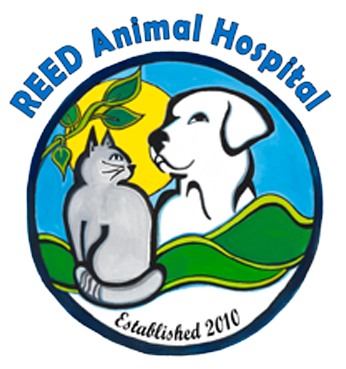Signs of Tooth Discomfort in Your Pet

If you’ve ever had a toothache, you know how painful it can be. When the nerves within the pulp are damaged suddenly, there’s a sharp pain; the nerves in a chronically affected tooth give more of a throbbing pain. When your pet has a toothache, though, it’s hard to tell, because pets can’t explain what’s happening or tell you which part of the mouth hurts. That’s why it’s our responsibility as pet owners and vets to pay attention to the signs.
Signs and symptoms are slightly different for dogs and cats. Both may experience bad breath, and both may change their eating habits. Your cat may avoid dry food, chew on one side of the mouth, drop food while eating, or vomit unchewed food. Dogs may have trouble with dry dog food as well and may drop it on the ground if it hits a painful area. Like cats, they might chew on one side of the mouth, or they may avoid eating entirely.
Dogs tend to show fewer signs of tooth discomfort than cats. A dog’s mouth might show signs of inflammation, and looking in his mouth you might see red, swollen gums. Without treatment, the teeth may loosen and fall out. If your dog doesn’t want you to touch his mouth, that may be a sign of mouth pain. Sometimes, dogs show signs of pain that you might not associate with a toothache. Your dog might yawn and cry when yawning, or he might scratch his ear, smack his lips, lick his nose, sneeze, chatter his teeth, or drool excessively. A dog might associate certain parts of the house with pain: if he wakes up in pain he may go sleep somewhere else to try to escape. He may also seem cranky and withdrawn.
Cats show many of the same signs as dogs, like drooling, chattering their teeth, pawing or rubbing the face, behaving differently, perhaps aggressively, and pulling away when you try to look at the mouth. Cats may also yawn excessively, grind their teeth, and shake or tilt their heads. Cats may also neglect their grooming and begin to look unkempt.
If you think your dog or cat may be experiencing tooth pain, you can trust Reed Animal Hospital to treat your pets as if they were our own. Our goal is to help you and your pet enjoys a healthy, fulfilling life together, and in pursuit of that goal, our extraordinary team offers a wide range of services. We’ve got veterinarians, technicians, assistants, and receptionists, all prepared to help you and your pet, and we even offer referrals to specialty surgeons, many of whom will travel to our office to consult with your pet. For more information or to make an appointment, call us in Campbell at 408. 369. 1788, or in Saratoga at 408.647.2906, or contact us through our website.
